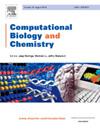PathwayMind: An innovative tool and database for pathway perturbation analysis, uncovering critical pathways for drugs and target protein sets
IF 2.6
4区 生物学
Q2 BIOLOGY
引用次数: 0
Abstract
Pathway enrichment analysis is a valuable tool for researchers aiming to understand the mechanisms underlying any specific drug or disease associated gene lists derived from biological assays or large-scale genome (omics) experiments. By employing this method, researchers can pinpoint biological pathways that exhibit a higher level of enrichment for a given set of genes than would be anticipated by random chance. These biological pathways play a crucial role in understanding the disease pathophysiology, therapeutic strategy, polypharmacological effects, synergistic mechanisms, and target engagement. However many of the available tools do not fulfill this requirement as most of the available tools consider a flat hierarchy of protein involvement in the pathway and do not consider topological information or importance of molecules in the pathway. Here we propose a novel method to enrich the molecular pathways and prioritize them based on their importance and crucial role in the biological function using the graph and evidence-based approach and customized datasets called PathwayMind. It includes 2648 pathways, 4539 biological events, 2465847 protein-protein interactions and 124717 gene-to-pathway relationships and the role of 3510 unique initial genes in 11,992 molecular pathways. The current manuscript comprises three major steps: The first step is about the data extraction and datasets creation for pathway enrichment, and the second steps comprises pathway perturbation analysis to identify most perturbed biological pathways and the third steps includes validation of this approach along with standalone tools and visualization algorithms which disclose the molecular involvement and improve the interpretability of the results. The end-to-end pathway analysis can be performed in a few minutes to provide complete insights of your target or drug of interest. The current PathwayMind tool and its datasets could be very useful for the molecular scientists and system biologists who are interested to understand the therapeutic effects of their drugs or understanding the involvement of biological pathways for specific gene sets which does not require any prior bioinformatics training.
PathwayMind:路径摄动分析的创新工具和数据库,揭示药物和靶蛋白集的关键路径
途径富集分析是一种有价值的工具,研究人员旨在了解任何特定药物或疾病相关基因列表的潜在机制,这些基因列表来自生物分析或大规模基因组(组学)实验。通过采用这种方法,研究人员可以精确定位出一组给定基因表现出比随机预期更高水平富集的生物学途径。这些生物学途径在理解疾病的病理生理、治疗策略、多药理学效应、协同机制和靶点参与方面发挥着至关重要的作用。然而,许多可用的工具并不能满足这一要求,因为大多数可用的工具都考虑了途径中蛋白质参与的扁平层次结构,而没有考虑途径中分子的拓扑信息或重要性。在这里,我们提出了一种新的方法来丰富分子通路,并根据它们在生物功能中的重要性和关键作用,使用图和循证方法以及称为PathwayMind的定制数据集来对它们进行优先排序。它包括2648个通路,4539个生物事件,2465847个蛋白-蛋白相互作用和124717个基因-通路关系,以及3510个独特的初始基因在11,992个分子通路中的作用。目前的手稿包括三个主要步骤:第一步是关于通路富集的数据提取和数据集创建,第二步包括通路扰动分析以识别最受干扰的生物通路,第三步包括该方法的验证以及独立工具和可视化算法,这些算法揭示了分子参与并提高了结果的可解释性。端到端通路分析可以在几分钟内完成,以提供您感兴趣的目标或药物的完整见解。当前的PathwayMind工具及其数据集对分子科学家和系统生物学家非常有用,他们对了解药物的治疗效果或了解特定基因集的生物途径感兴趣,而不需要任何先前的生物信息学培训。
本文章由计算机程序翻译,如有差异,请以英文原文为准。
求助全文
约1分钟内获得全文
求助全文
来源期刊

Computational Biology and Chemistry
生物-计算机:跨学科应用
CiteScore
6.10
自引率
3.20%
发文量
142
审稿时长
24 days
期刊介绍:
Computational Biology and Chemistry publishes original research papers and review articles in all areas of computational life sciences. High quality research contributions with a major computational component in the areas of nucleic acid and protein sequence research, molecular evolution, molecular genetics (functional genomics and proteomics), theory and practice of either biology-specific or chemical-biology-specific modeling, and structural biology of nucleic acids and proteins are particularly welcome. Exceptionally high quality research work in bioinformatics, systems biology, ecology, computational pharmacology, metabolism, biomedical engineering, epidemiology, and statistical genetics will also be considered.
Given their inherent uncertainty, protein modeling and molecular docking studies should be thoroughly validated. In the absence of experimental results for validation, the use of molecular dynamics simulations along with detailed free energy calculations, for example, should be used as complementary techniques to support the major conclusions. Submissions of premature modeling exercises without additional biological insights will not be considered.
Review articles will generally be commissioned by the editors and should not be submitted to the journal without explicit invitation. However prospective authors are welcome to send a brief (one to three pages) synopsis, which will be evaluated by the editors.
 求助内容:
求助内容: 应助结果提醒方式:
应助结果提醒方式:


